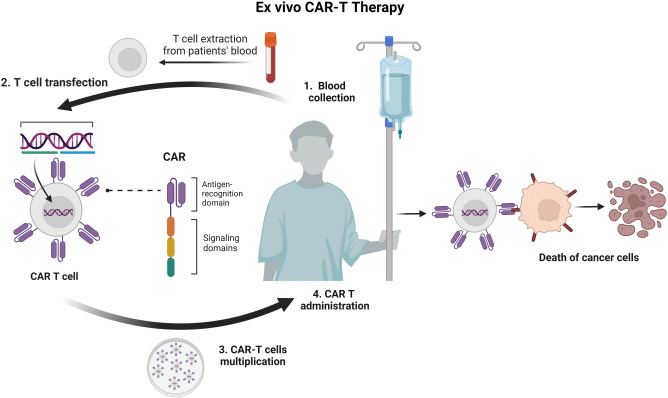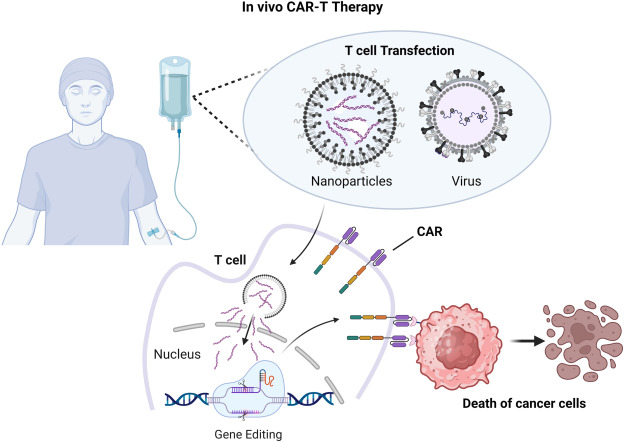Font size:
Print
CAR T-Cell Therapy
Technique to make CAR T-cells in vivo could transform cancer care
Context: A recent study published by US and international researchers introduced a novel in vivo approach that engineers T cells inside the body using lipid nanoparticles (LNPs) carrying messenger RNA (mRNA), bypassing the need for lab-based cell modification and chemotherapy.

What is CAR T-cell therapy?
- CAR T-cell therapy is an advanced immunotherapy that retrains a patient’s own T cells to recognise and destroy cancer cells, particularly in aggressive blood cancers unresponsive to standard treatments.
- Originally developed in the early 1990s, it involves extracting T cells, genetically engineering them to express chimeric antigen receptors (CARs) that target specific proteins like CD19 on B cells, and infusing them back into the patient’s body.
- This therapy has led to remissions lasting months or years in some acute leukaemias and is being explored for severe autoimmune diseases such as lupus to reset the immune system.
Who Benefits from CAR T-Cell Therapy?
- Patients with aggressive B cell-driven cancers like diffuse large B-cell lymphoma (DLBCL), follicular lymphoma, and acute lymphoblastic leukaemia (ALL), which are prevalent in India.
- Patients with severe autoimmune disorders where B cells mistakenly attack the body, as early trials suggest potential benefits.
- Frail, elderly, or comorbid patients who may not tolerate conventional CAR T-cell therapy due to its complexity and side effects.
What Are Its Limitations?
- In India, the therapy costs approximately ₹60-70 lakh, with about half the cost attributed to manufacturing personalised CAR T cells and the rest for hospitalisation and supportive care.
- Limitations include high cost, complex manufacturing, slow process, requirement for chemotherapy-based lymphodepletion, and risks such as cytokine release syndrome (CRS), infections, and neurological complications.

Why is the New In Vivo CAR T-Cell Therapy Significant?
- It delivers CAR genetic instructions directly to circulating CD8+ T cells using CD8-targeted lipid nanoparticles (CD8-tLNP), avoiding personalised cell processing and viral vectors.
- This approach induces temporary CAR expression via mRNA, reducing risks of permanent genetic side effects.
- It eliminates the need for lymphodepleting chemotherapy, lowering the risk of secondary infections and prolonged hospital stays.
- The therapy showed strong efficacy in mice and cynomolgus monkeys, depleting B cells across tissues and causing tumour regression without complex infrastructure.
How Does the New Platform Work?
- The CD8-tLNP formulation includes Lipid 829, a biodegradable carrier with improved tolerability and faster liver clearance, reducing inflammation compared to earlier nanoparticles.
- Two or three intravenous infusions spaced 72 hours apart induced CAR expression in up to 85% of CD8+ T cells and nearly all related immune cells in monkeys.
- The treatment led to near-complete depletion of B cells in blood and tissues, with repopulation by naïve B cells, suggesting an immune reset similar to that observed in lupus patients after conventional CAR T therapy.


